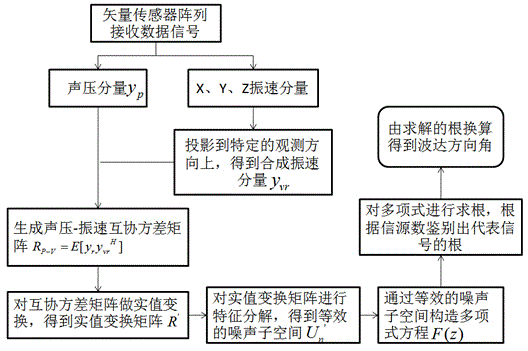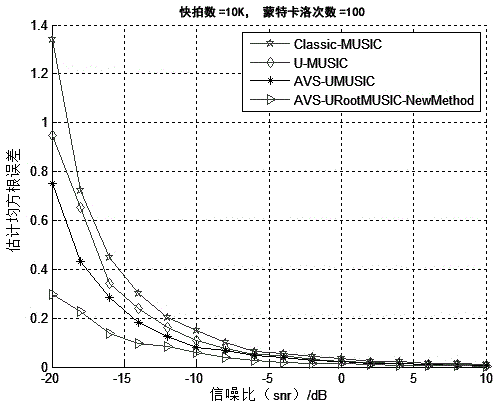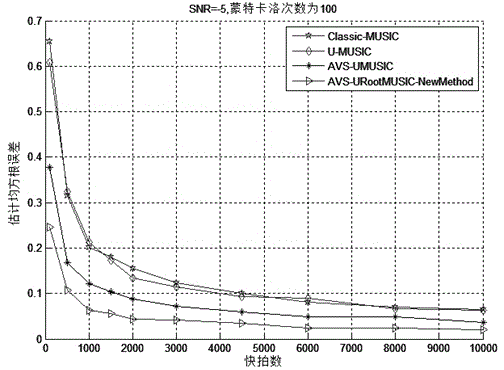Direction-of-arrival angle detection method
A detection method, azimuth angle technology, applied in direction finders using ultrasonic/sonic/infrasonic waves, systems that eliminate unnecessary waves, systems that determine direction or offset, etc., can solve the problem of reduced convergence speed and insufficient use of vectors Problems such as sensor coherence and poor detection performance
- Summary
- Abstract
- Description
- Claims
- Application Information
AI Technical Summary
Problems solved by technology
Method used
Image
Examples
Embodiment Construction
[0038] Below in conjunction with accompanying drawing, preferred embodiment of the present invention is described in further detail:
[0039] see figure 1 , a detection method of azimuth of arrival, the method comprises the following steps:
[0040] S1. Arrange M vector sensors at equal intervals to form a linear acoustic vector array, and project K far-field narrowband coherent source signals onto the vector array, take the first array element as a reference point, take a snapshot, and receive the data signal s (t); Wherein, M≥10, K≤M; Sensor element spacing d=λ / 2, λ is the wavelength of the incident signal;
[0041]S2, the data signal s (t) that described vector array receives t times is converted into vector form with vibration velocity sensor and output, and this output result satisfies the following formula:
[0042] y p ( t )...
PUM
 Login to View More
Login to View More Abstract
Description
Claims
Application Information
 Login to View More
Login to View More - R&D
- Intellectual Property
- Life Sciences
- Materials
- Tech Scout
- Unparalleled Data Quality
- Higher Quality Content
- 60% Fewer Hallucinations
Browse by: Latest US Patents, China's latest patents, Technical Efficacy Thesaurus, Application Domain, Technology Topic, Popular Technical Reports.
© 2025 PatSnap. All rights reserved.Legal|Privacy policy|Modern Slavery Act Transparency Statement|Sitemap|About US| Contact US: help@patsnap.com



